Katharina Grosse
Studio Paintings, 1988–2022
03 Mar - 25 Jun 2023
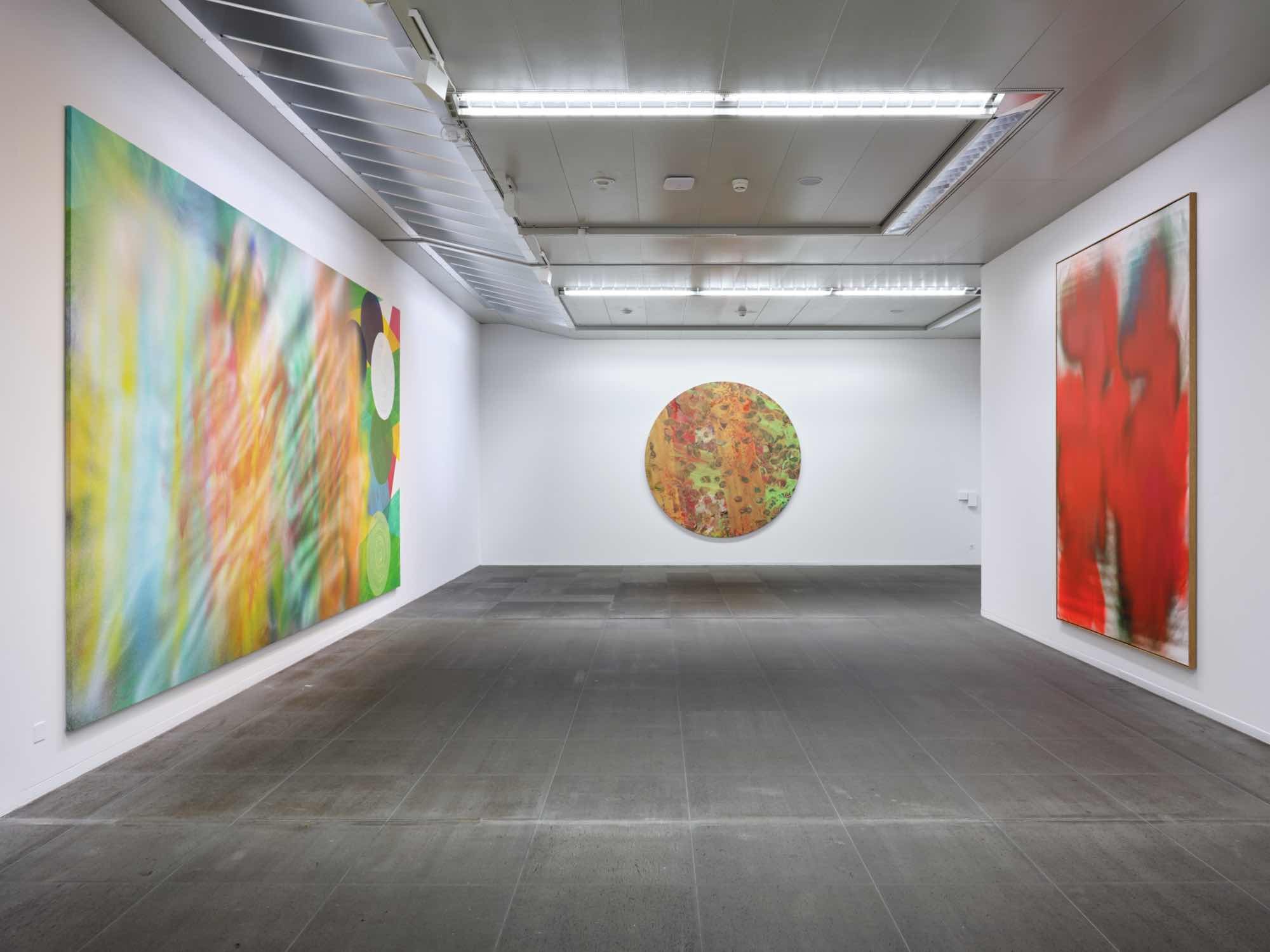
Exhibition view: Katharina Grosse. Studio Paintings, 1988–2022
Photo: © Rolf Siegenthaler / Kunstmuseum Bern
Photo: © Rolf Siegenthaler / Kunstmuseum Bern
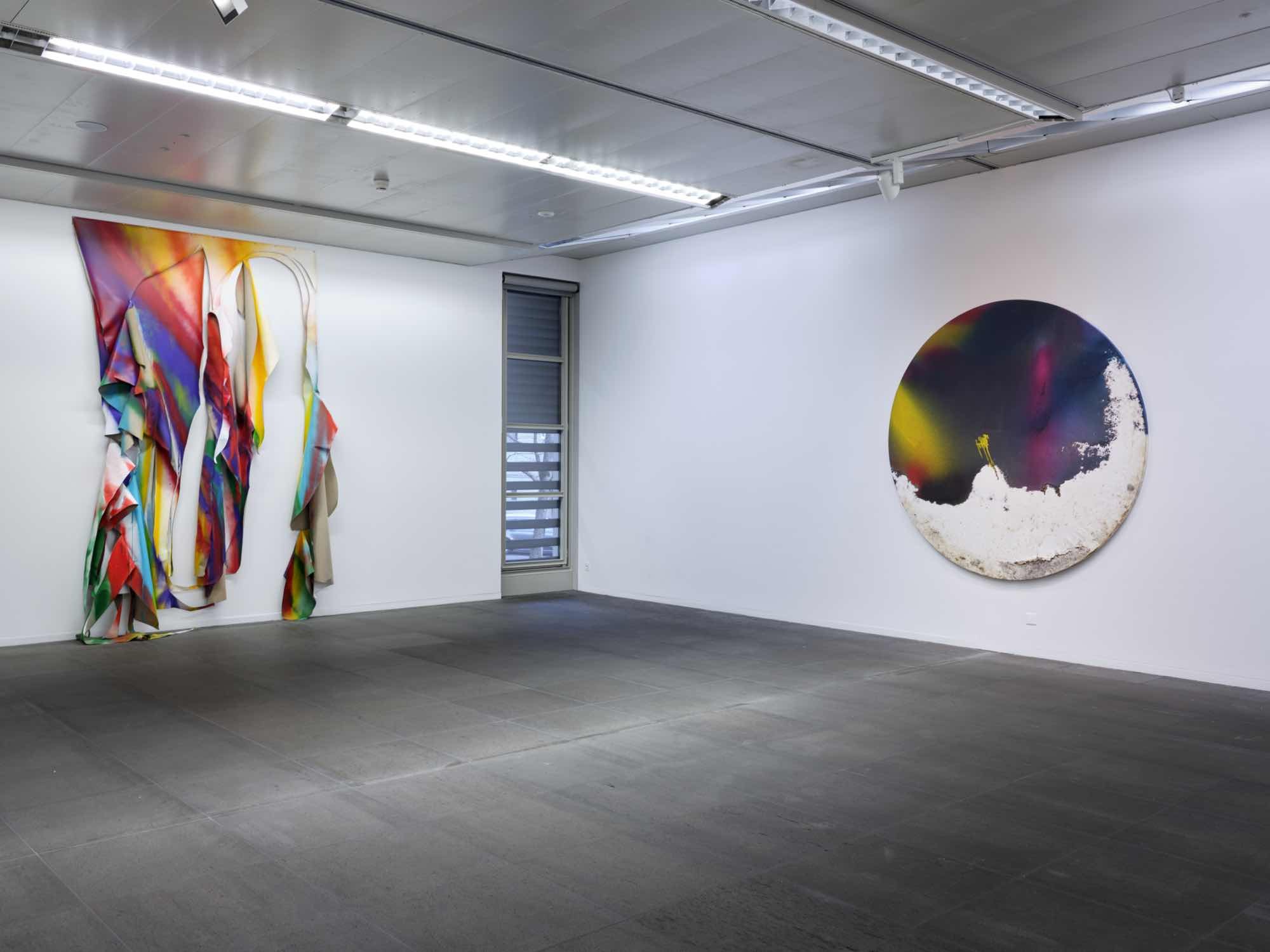
Exhibition view: Katharina Grosse. Studio Paintings, 1988–2022
Photo: © Rolf Siegenthaler / Kunstmuseum Bern
Photo: © Rolf Siegenthaler / Kunstmuseum Bern
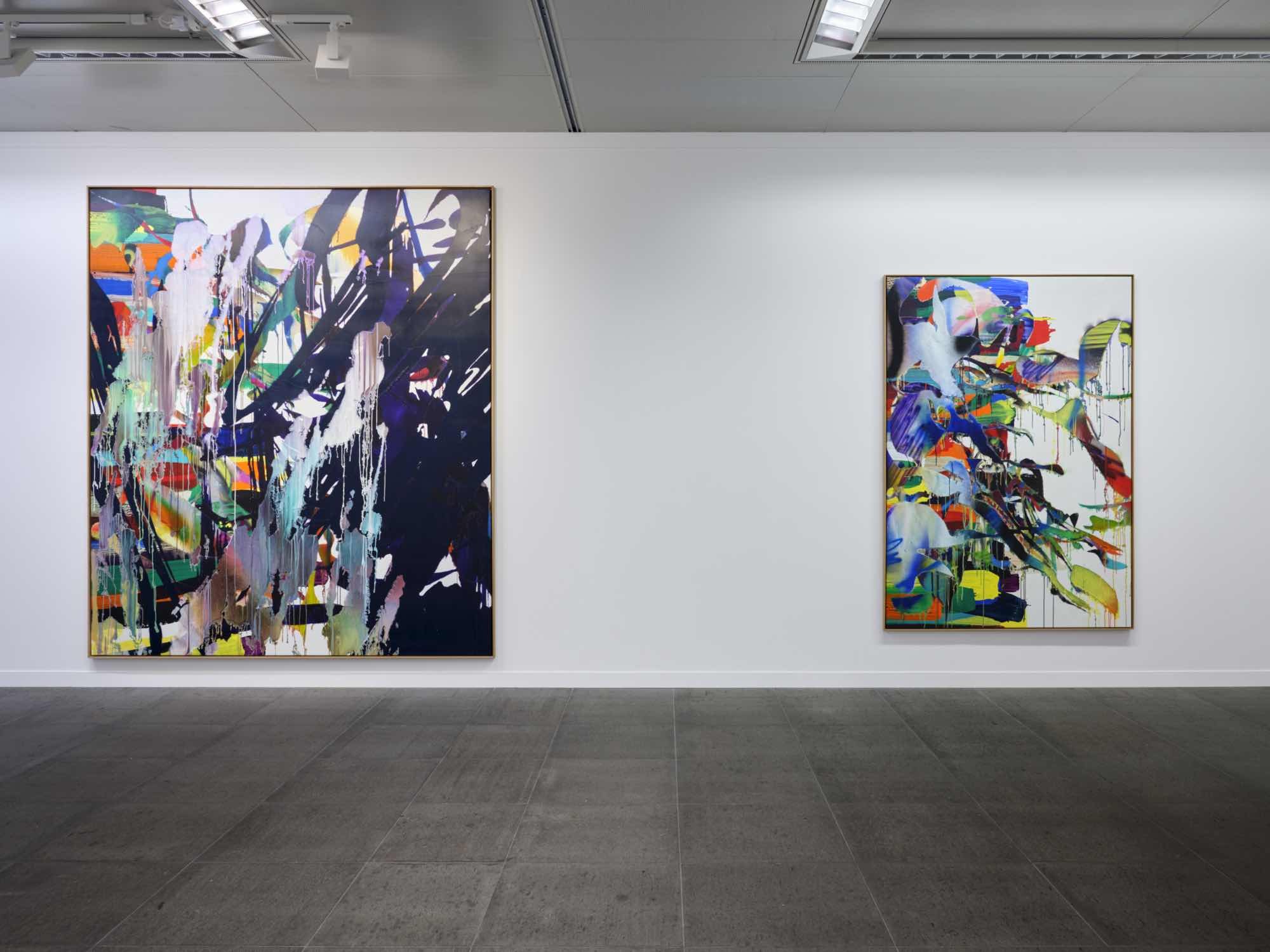
Exhibition view: Katharina Grosse. Studio Paintings, 1988–2022
Photo: © Rolf Siegenthaler / Kunstmuseum Bern
Photo: © Rolf Siegenthaler / Kunstmuseum Bern
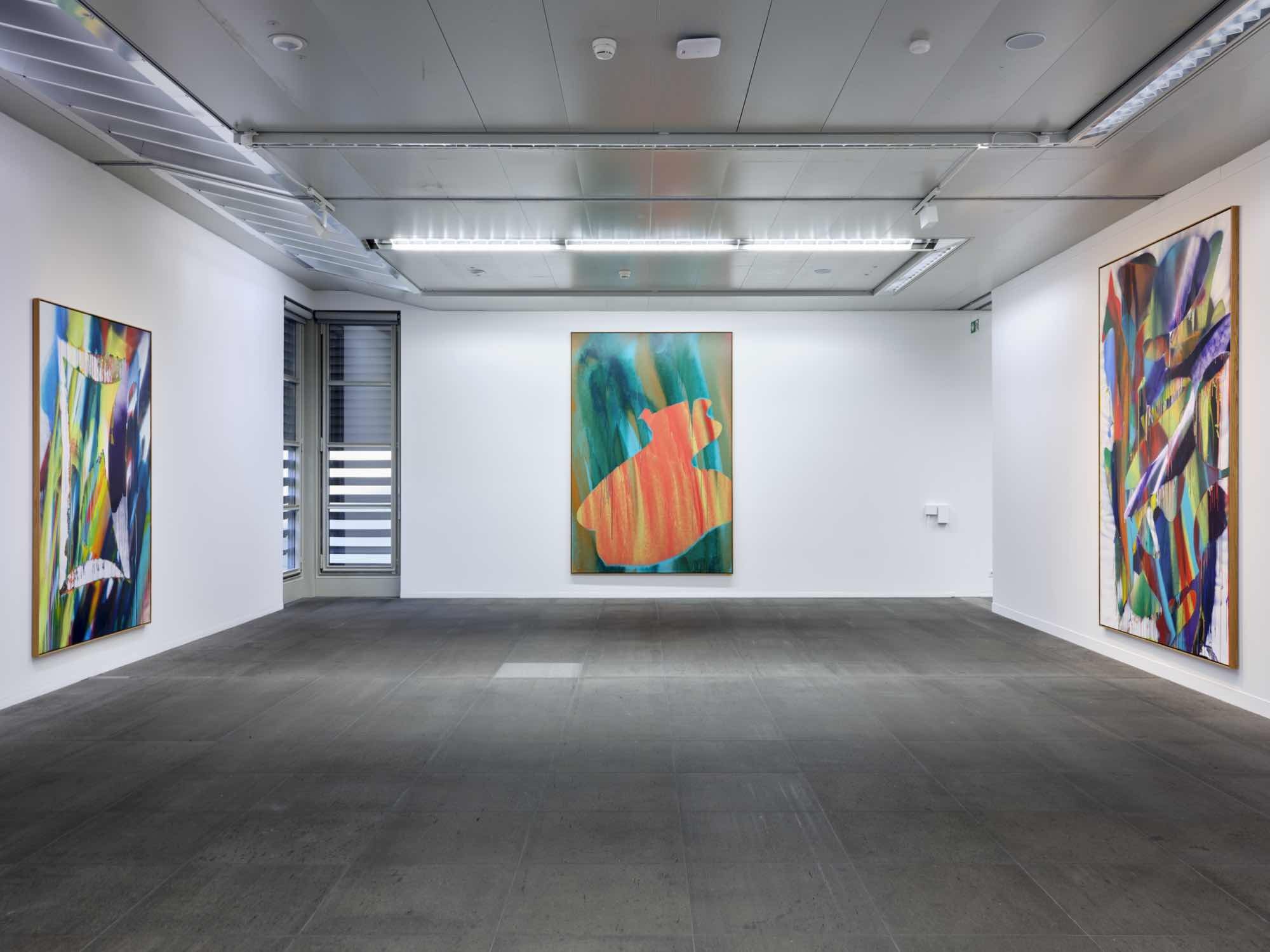
Exhibition view: Katharina Grosse. Studio Paintings, 1988–2022
Photo: © Rolf Siegenthaler / Kunstmuseum Bern
Photo: © Rolf Siegenthaler / Kunstmuseum Bern
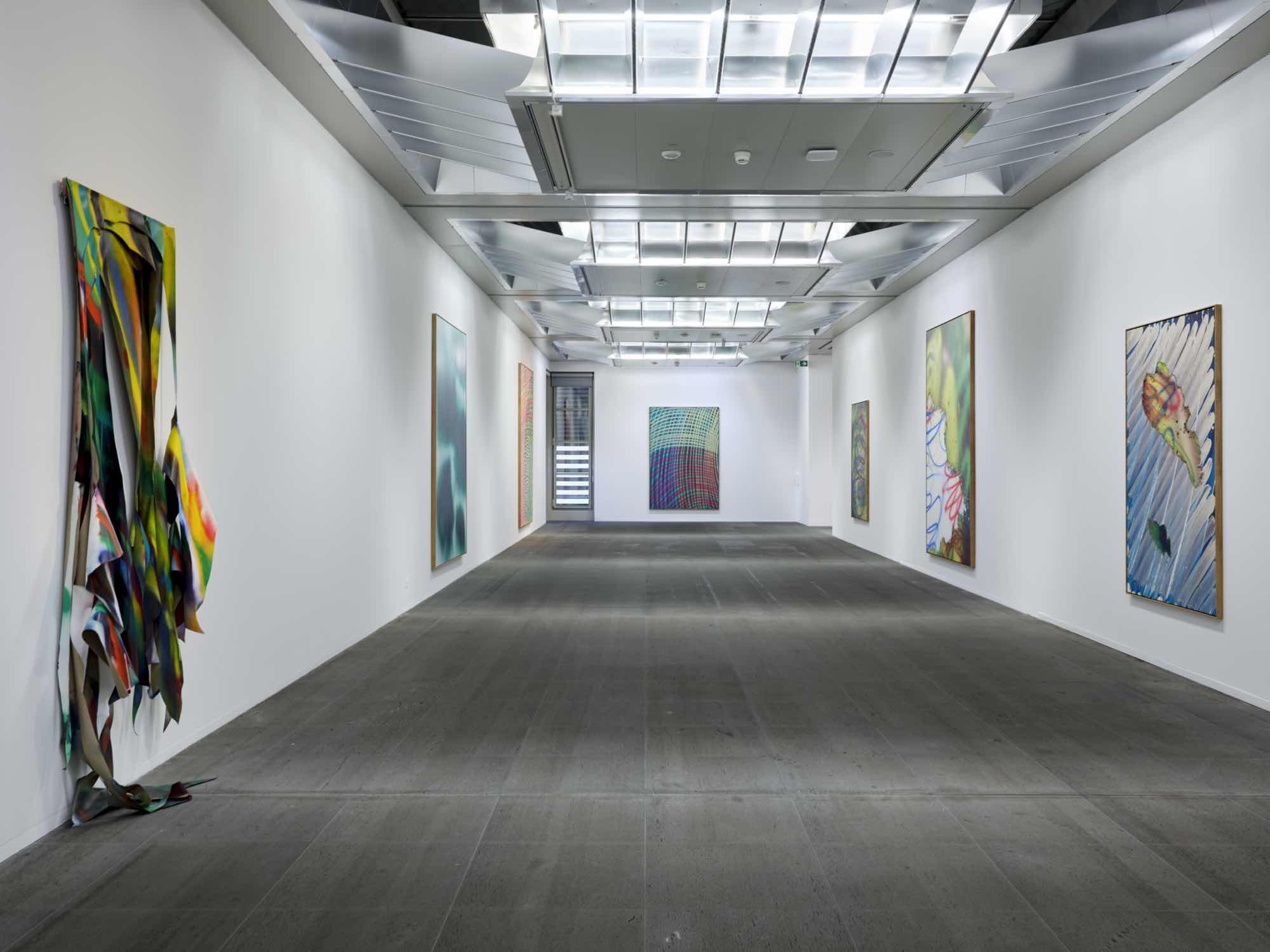
Exhibition view: Katharina Grosse. Studio Paintings, 1988–2022
Photo: © Rolf Siegenthaler / Kunstmuseum Bern
Photo: © Rolf Siegenthaler / Kunstmuseum Bern
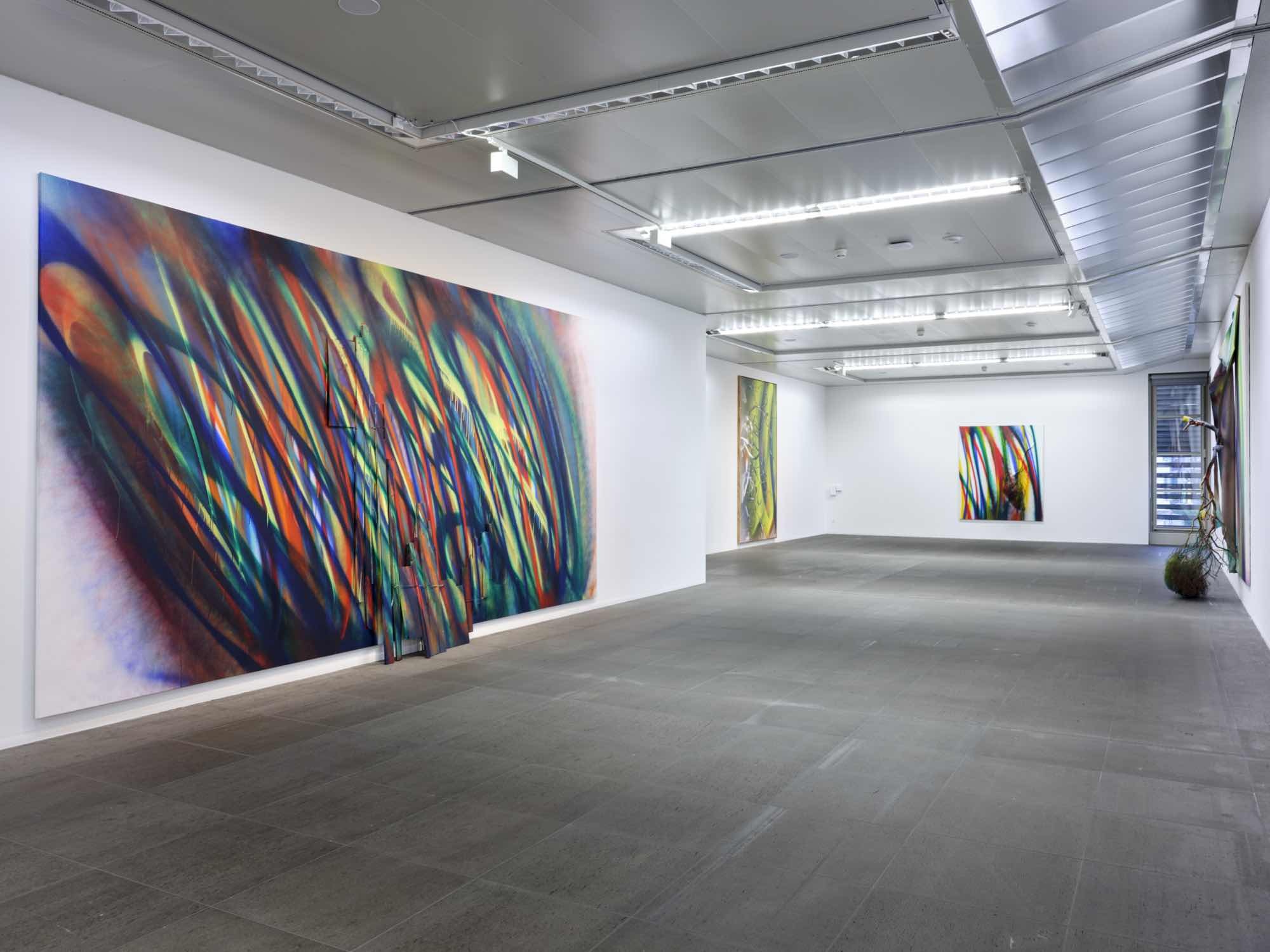
Exhibition view: Katharina Grosse. Studio Paintings, 1988–2022
Photo: © Rolf Siegenthaler / Kunstmuseum Bern
Photo: © Rolf Siegenthaler / Kunstmuseum Bern
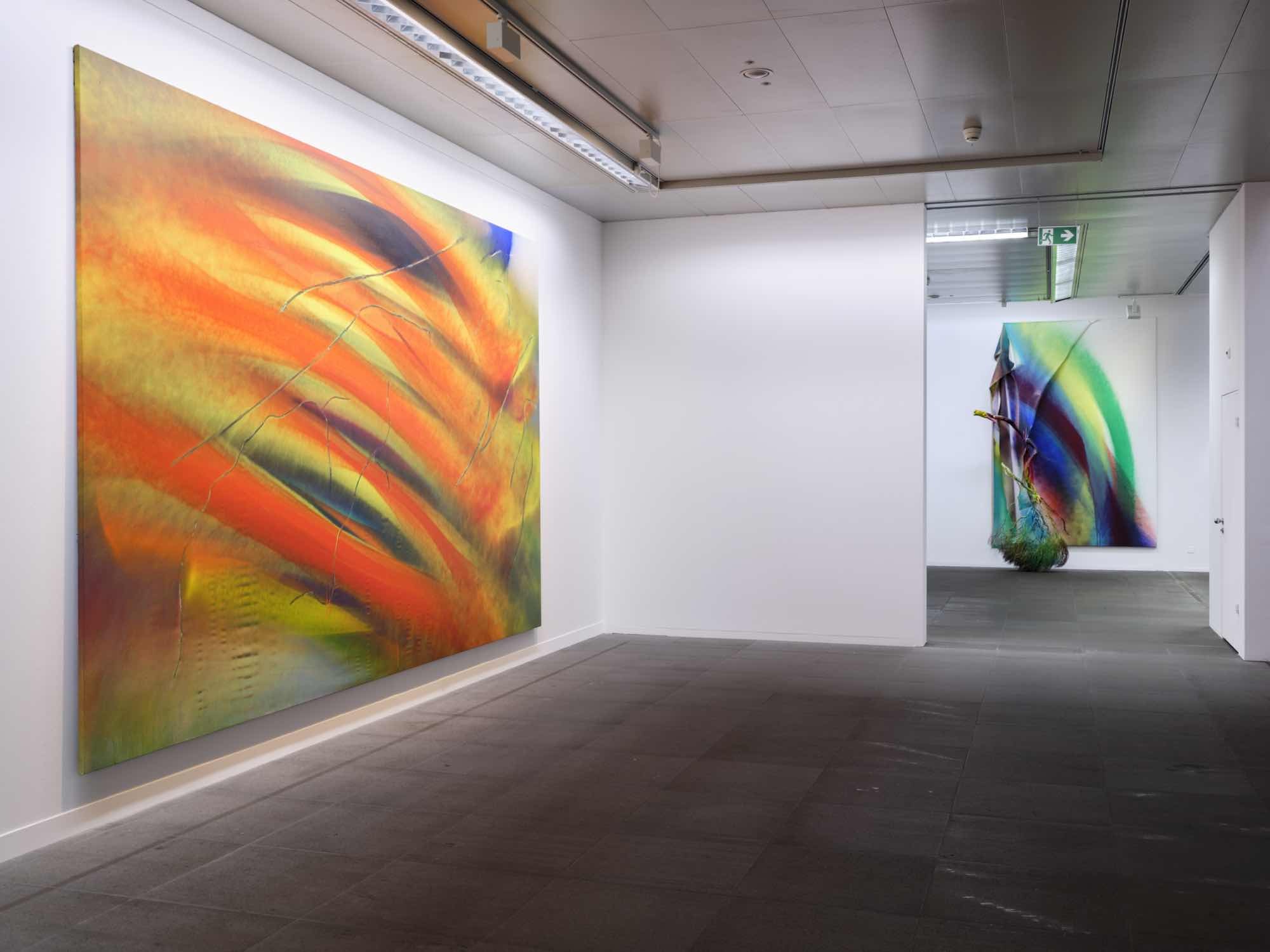
Exhibition view: Katharina Grosse. Studio Paintings, 1988–2022
Photo: © Rolf Siegenthaler / Kunstmuseum Bern
Photo: © Rolf Siegenthaler / Kunstmuseum Bern
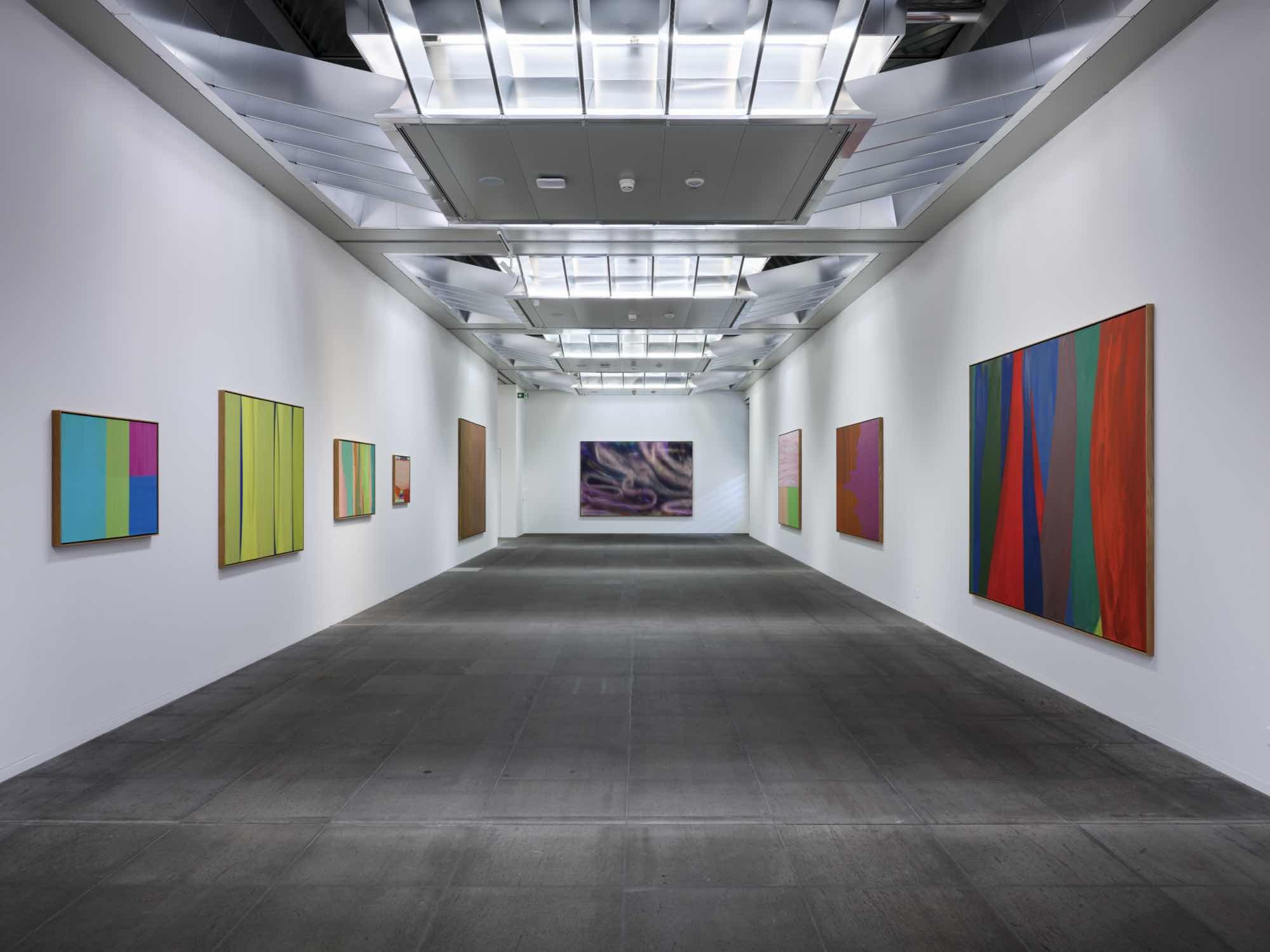
Exhibition view: Katharina Grosse. Studio Paintings, 1988–2022
Photo: © Rolf Siegenthaler / Kunstmuseum Bern
Photo: © Rolf Siegenthaler / Kunstmuseum Bern
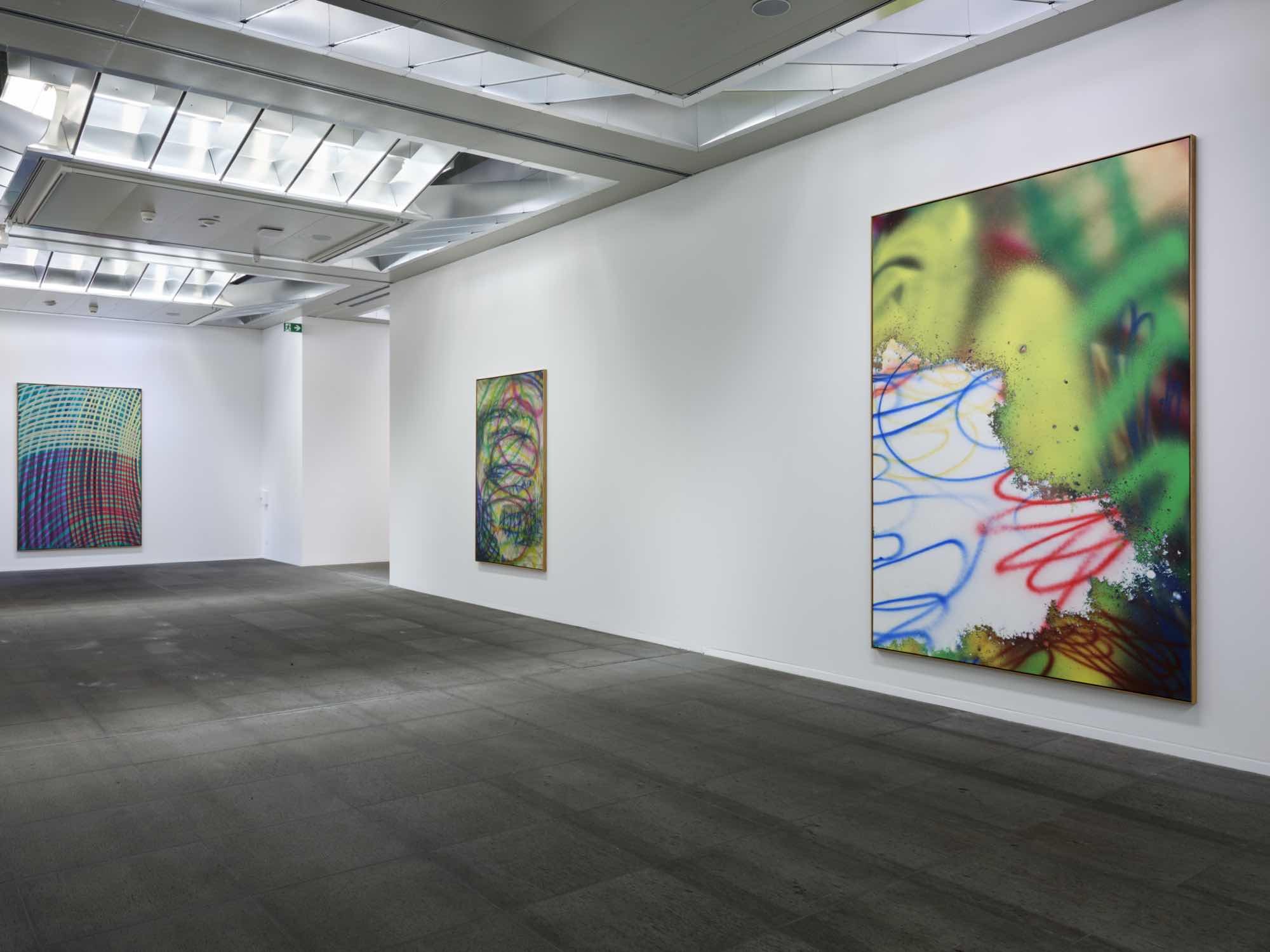
Exhibition view: Katharina Grosse. Studio Paintings, 1988–2022
Photo: © Rolf Siegenthaler / Kunstmuseum Bern
Photo: © Rolf Siegenthaler / Kunstmuseum Bern
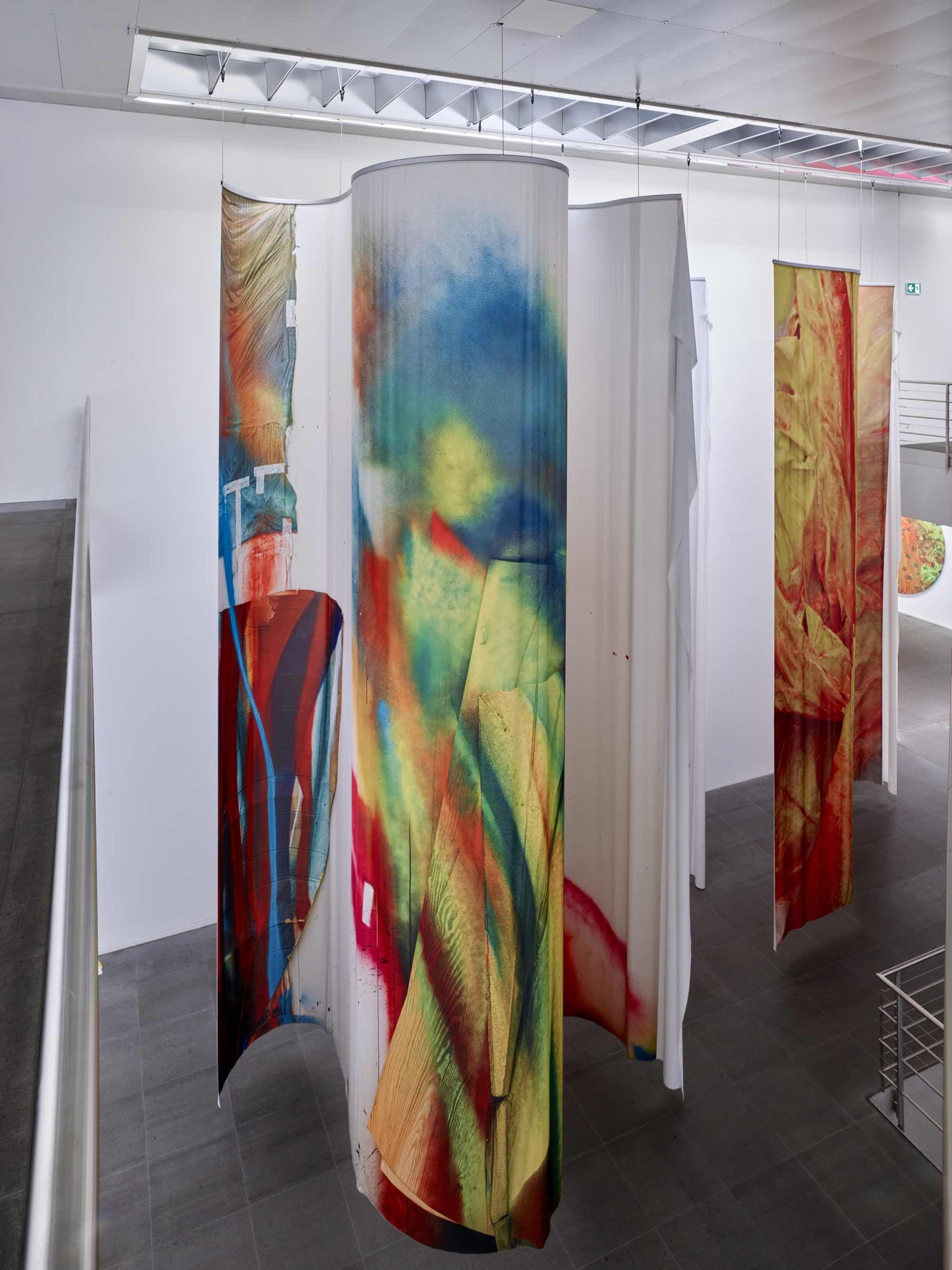
Exhibition view: Katharina Grosse. Studio Paintings, 1988–2022
Photo: © Rolf Siegenthaler / Kunstmuseum Bern
Photo: © Rolf Siegenthaler / Kunstmuseum Bern
Between 3 March and 25 June 2023 the Kunstmuseum Bern is showing a major exhibition devoted to Katharina Grosse. It is the first exhibition in Switzerland to focus on Grosse’s studio works. The largeformat, vibrantly coloured paintings from the 1980s until the present clearly show the importance of the works on canvas in the German artist’s oeuvre as a whole.
Since the 1990s Katharina Grosse (born 1961) has developed a body of work marked by an interest in performativity and mediality. Of central importance to Grosse’s practice is colour: she experiments with its physical presence and its sensory and socio-political potential. Grosse uses paint in order to break down conventional relationships between foreground, background and underground – both on the canvas and beyond it. The exhibition addresses the canvas paintings that Katharina Grosse made in her studio between the late 1980s and the present.
In this large survey exhibition, the Kunstmuseum Bern is showing 43 paintings from all phases of her work, and three new room-sized photographic prints on fabric. The exhibition was conceived by the Mildred Lane Kemper Museum in St Louis and reimagined in collaboration with the artist for the galleries of the Kunstmuseum Bern.
Studio works as a new perspective
Katharina Grosse already began working on her first studio works while studying at Kunstakademie Düsseldorf between 1986 and 1990. Based on these works the German artist achieved a breakthrough in the 1990s: in the Kunsthalle Bern in 1998 she made her very first spray-paint intervention – a method for which she is now internationally famous. With the three largeformat photographic prints on fabric, the exhibition in the Kunstmuseum Bern 25 years later shows yet again a site-related installation by Katharina Grosse and sheds new light on the artist’s work, always moving along the boundaries of current ideas of painting, from the viewpoint of her studio works.
Returns, revisions, inventions
Like Grosse’s artistic process, the exhibition is divided into two thematic chapters, in which paintings from different phases of the artist’s work confront one another. In the first chapter Returns, Revisions, Inventions the artistic process is laid bare in all its revisions and new inventions. The juxtaposition of paintings from different decades reveals the ways in which Katharina Grosse returns to previous moments in her own oeuvre and develops them further with new inventions. Colours and forms, materials and working methods appear, then reappear transformed. For example Grosse has recurrently experimented with the course of a line, whether painted, with a brush, sprayed from a gun or both at once.
The second chapter Fissures and Ruptures expands on this approach, and highlights the various methods Grosse uses to break up the homogenous surface of the image in order to question its autonomy and connect it to the spaces of the everyday. Since 1998 Grosse has painted not only with brushes but also with industrial spray-gun that allow her to paint – without any physical contact with the surface – across the edges of the canvas into built space. Throughout the 2010s she also started interrupting her painting process with stencils. By using cardboard, studio waste and materials alien to painting such as piles of earth, she covers parts of the painting and in this away confuses foreground and background in the painting. This approach reached a radical climax in 2020 when Grosse began to slash her paintings and in this way make the wall behind the canvas part of the painting.
Colour play for the senses
The element of colour is of central importance in the interplay of references and ruptures in Grosse’s painting. The artist assigns an immediate resonance to colour, which hits the viewer before one has fully grasped it:
‘Colour is so important to me because it creates an immediate resonance within you. Before you know it, you have a visceral reaction to it, like a voice in a performance that hits you before you can even discern words or lyrics.’
The pure, strong colours that Grosse uses reveal their full effect in the largeformat paintings, and plunge viewers into a sensual play of colours. With constantly new variations and unfamiliar minglings of foreground, background and sourrounding space, the works invite the viewer to discover diversity and adopt different perspectives – an approach that reflects not only sensory but in many respects socio-political potential.
Since the 1990s Katharina Grosse (born 1961) has developed a body of work marked by an interest in performativity and mediality. Of central importance to Grosse’s practice is colour: she experiments with its physical presence and its sensory and socio-political potential. Grosse uses paint in order to break down conventional relationships between foreground, background and underground – both on the canvas and beyond it. The exhibition addresses the canvas paintings that Katharina Grosse made in her studio between the late 1980s and the present.
In this large survey exhibition, the Kunstmuseum Bern is showing 43 paintings from all phases of her work, and three new room-sized photographic prints on fabric. The exhibition was conceived by the Mildred Lane Kemper Museum in St Louis and reimagined in collaboration with the artist for the galleries of the Kunstmuseum Bern.
Studio works as a new perspective
Katharina Grosse already began working on her first studio works while studying at Kunstakademie Düsseldorf between 1986 and 1990. Based on these works the German artist achieved a breakthrough in the 1990s: in the Kunsthalle Bern in 1998 she made her very first spray-paint intervention – a method for which she is now internationally famous. With the three largeformat photographic prints on fabric, the exhibition in the Kunstmuseum Bern 25 years later shows yet again a site-related installation by Katharina Grosse and sheds new light on the artist’s work, always moving along the boundaries of current ideas of painting, from the viewpoint of her studio works.
Returns, revisions, inventions
Like Grosse’s artistic process, the exhibition is divided into two thematic chapters, in which paintings from different phases of the artist’s work confront one another. In the first chapter Returns, Revisions, Inventions the artistic process is laid bare in all its revisions and new inventions. The juxtaposition of paintings from different decades reveals the ways in which Katharina Grosse returns to previous moments in her own oeuvre and develops them further with new inventions. Colours and forms, materials and working methods appear, then reappear transformed. For example Grosse has recurrently experimented with the course of a line, whether painted, with a brush, sprayed from a gun or both at once.
The second chapter Fissures and Ruptures expands on this approach, and highlights the various methods Grosse uses to break up the homogenous surface of the image in order to question its autonomy and connect it to the spaces of the everyday. Since 1998 Grosse has painted not only with brushes but also with industrial spray-gun that allow her to paint – without any physical contact with the surface – across the edges of the canvas into built space. Throughout the 2010s she also started interrupting her painting process with stencils. By using cardboard, studio waste and materials alien to painting such as piles of earth, she covers parts of the painting and in this away confuses foreground and background in the painting. This approach reached a radical climax in 2020 when Grosse began to slash her paintings and in this way make the wall behind the canvas part of the painting.
Colour play for the senses
The element of colour is of central importance in the interplay of references and ruptures in Grosse’s painting. The artist assigns an immediate resonance to colour, which hits the viewer before one has fully grasped it:
‘Colour is so important to me because it creates an immediate resonance within you. Before you know it, you have a visceral reaction to it, like a voice in a performance that hits you before you can even discern words or lyrics.’
The pure, strong colours that Grosse uses reveal their full effect in the largeformat paintings, and plunge viewers into a sensual play of colours. With constantly new variations and unfamiliar minglings of foreground, background and sourrounding space, the works invite the viewer to discover diversity and adopt different perspectives – an approach that reflects not only sensory but in many respects socio-political potential.
